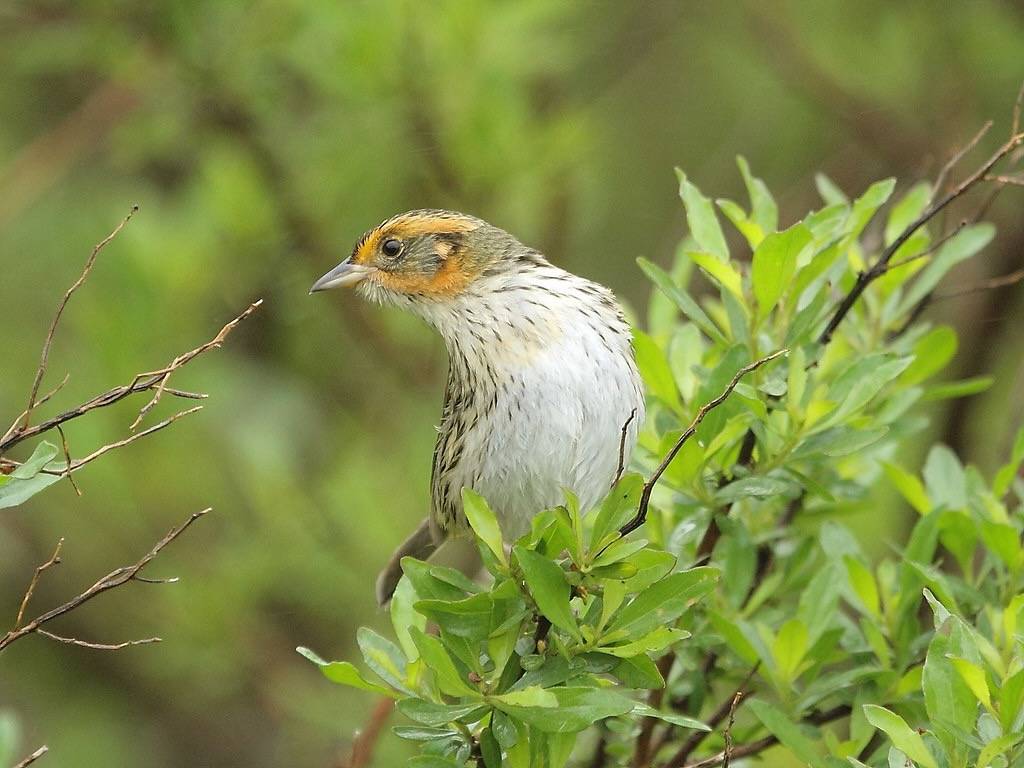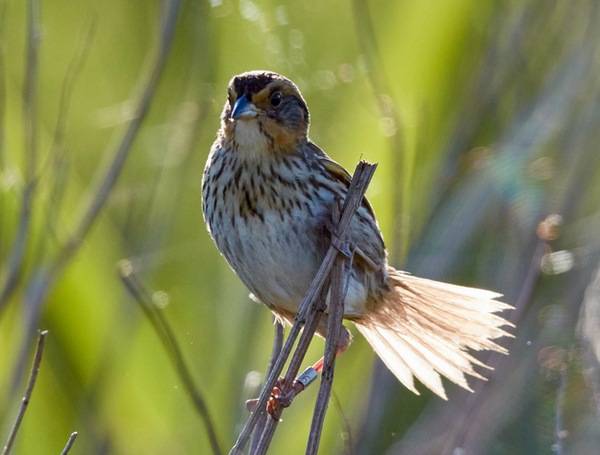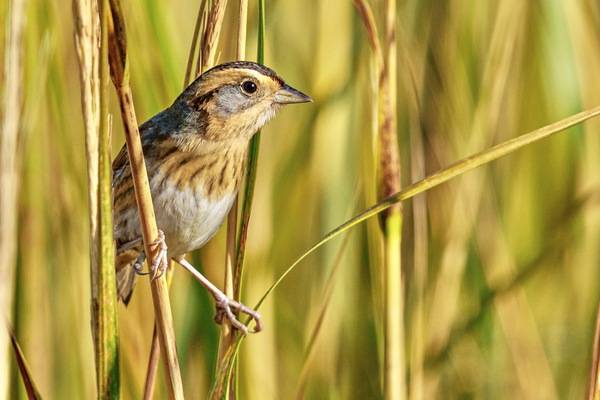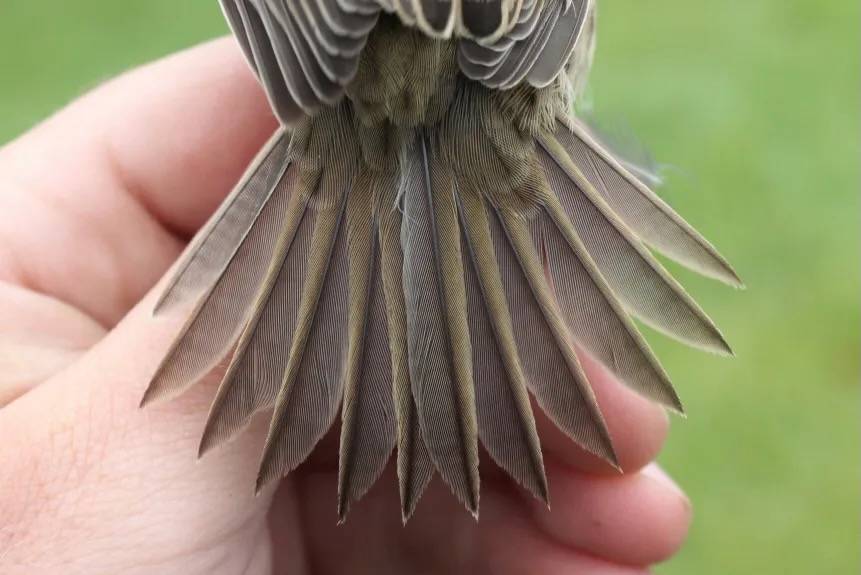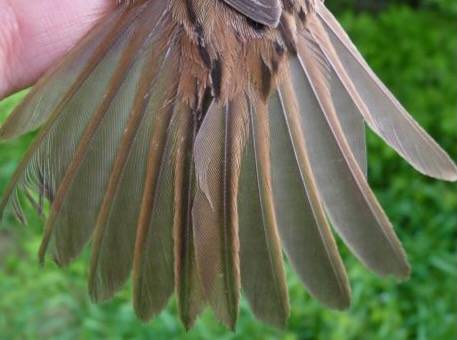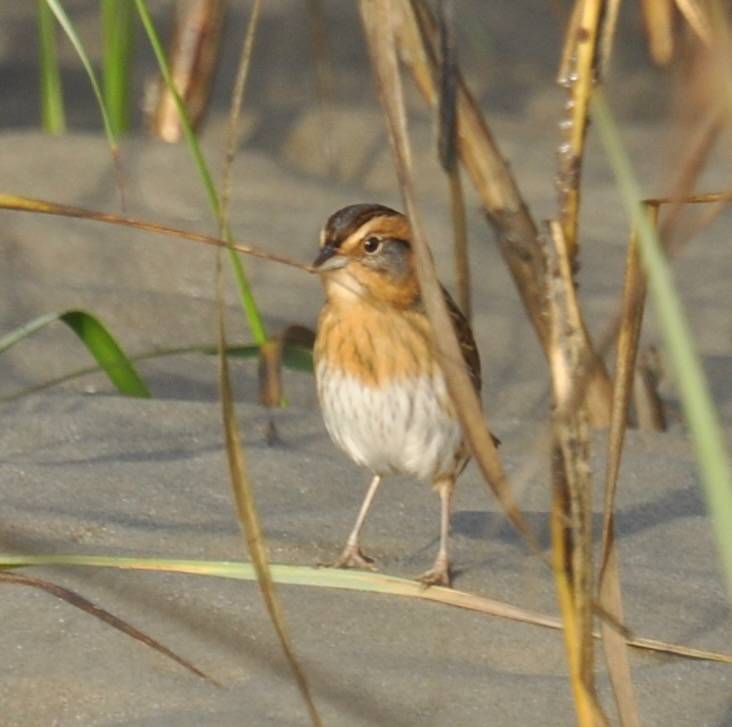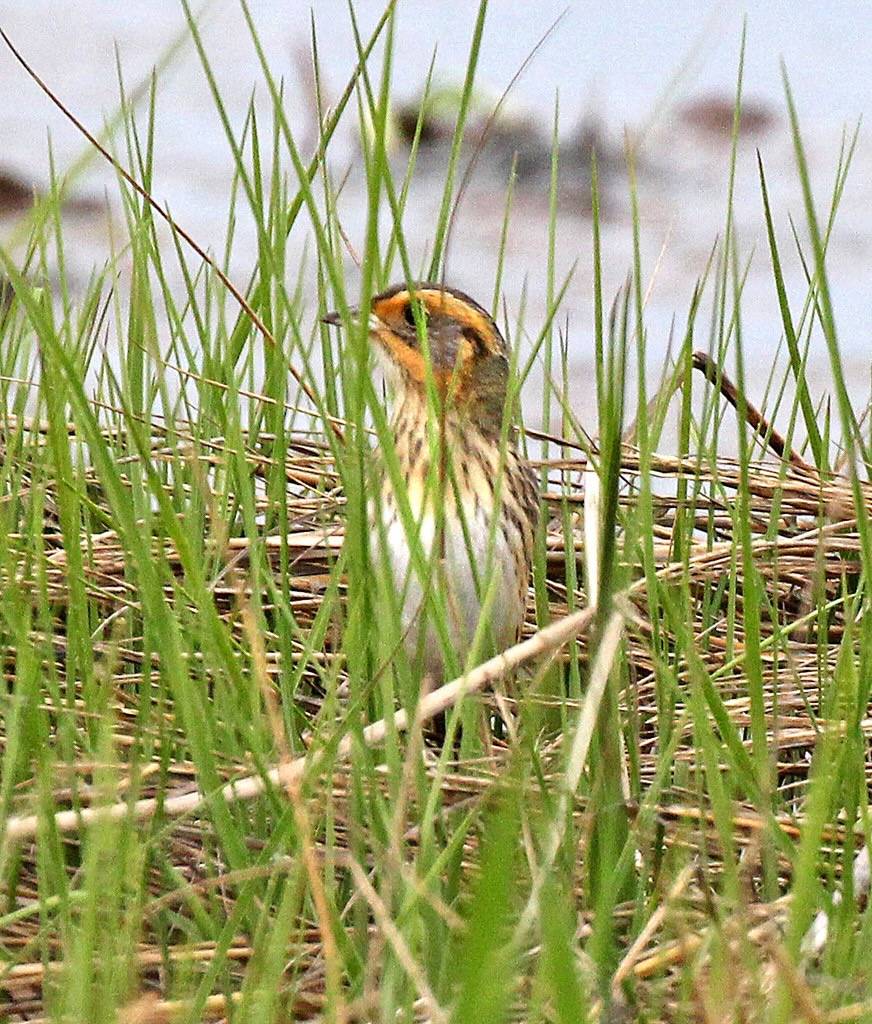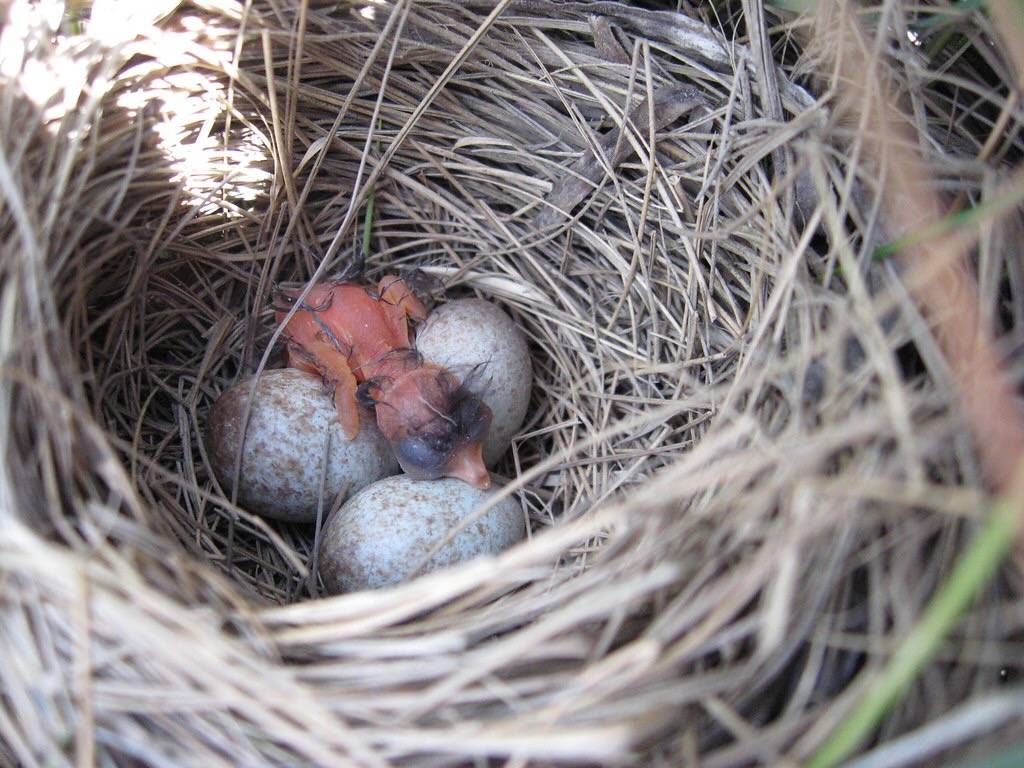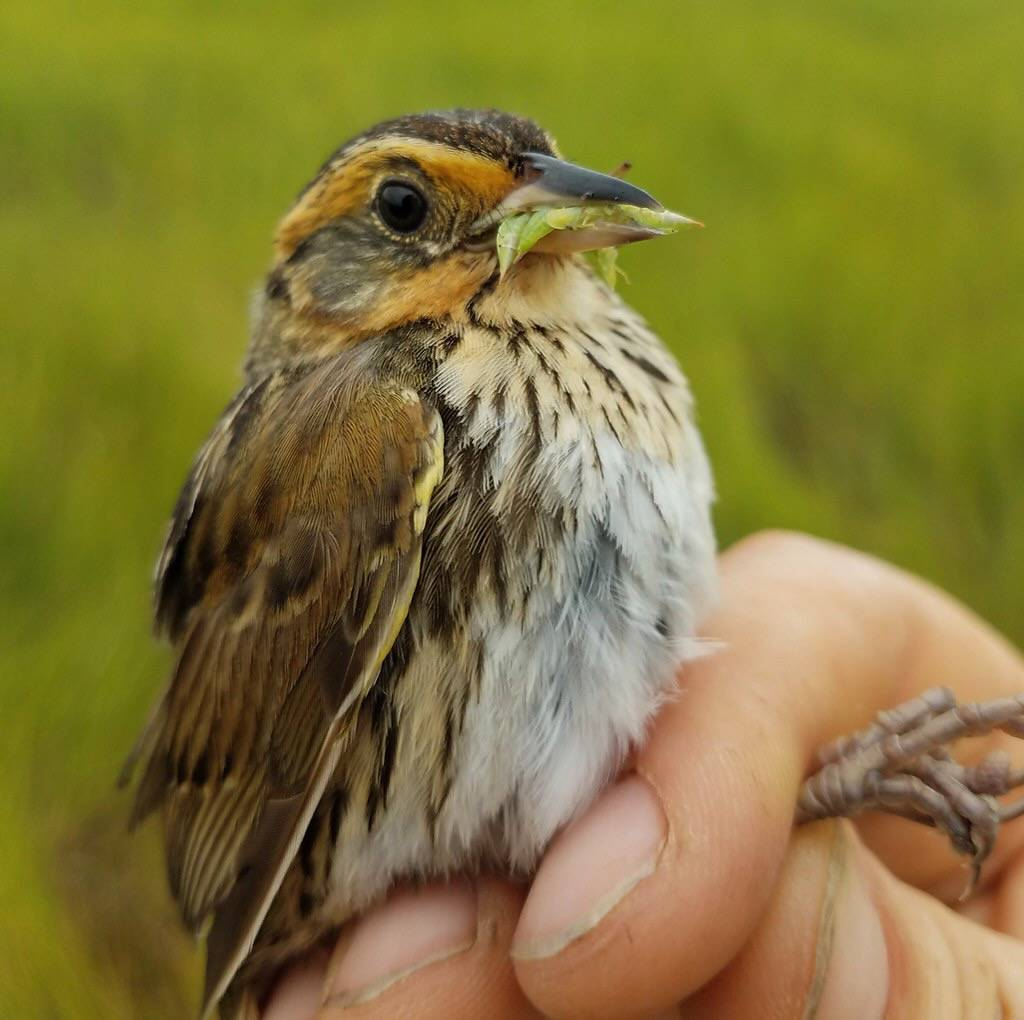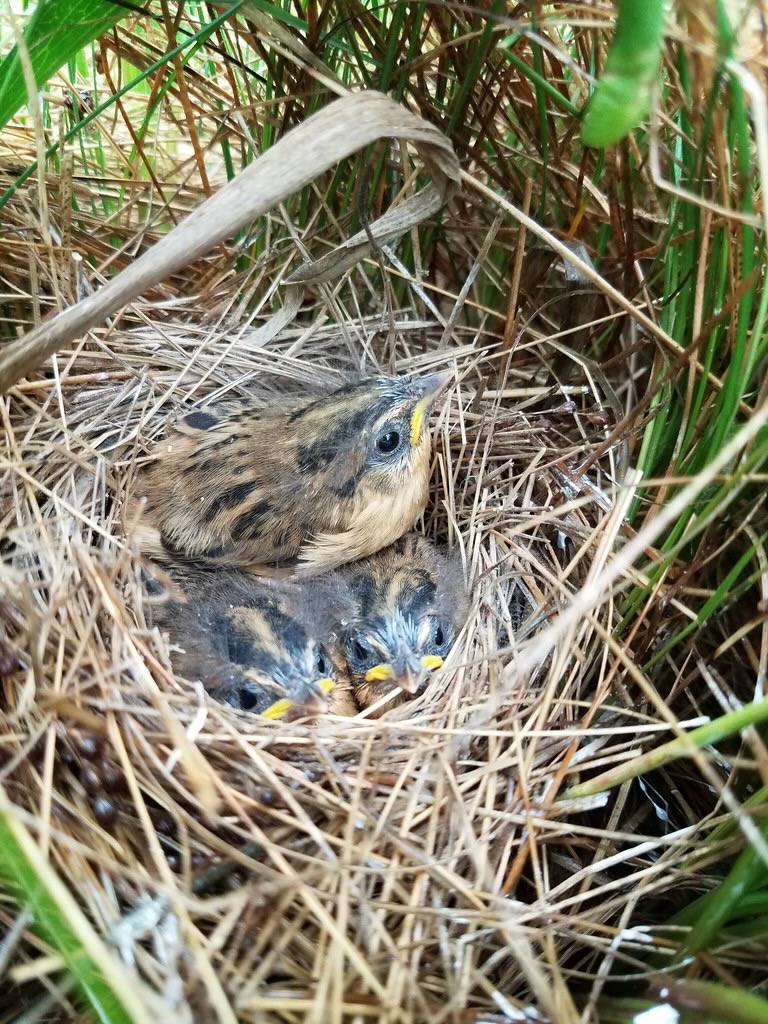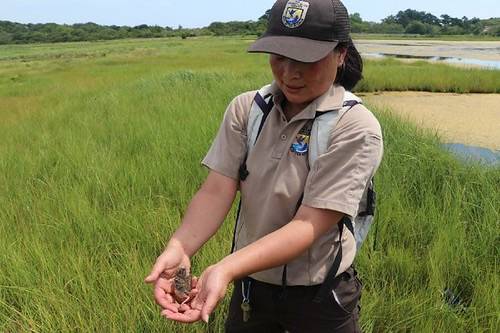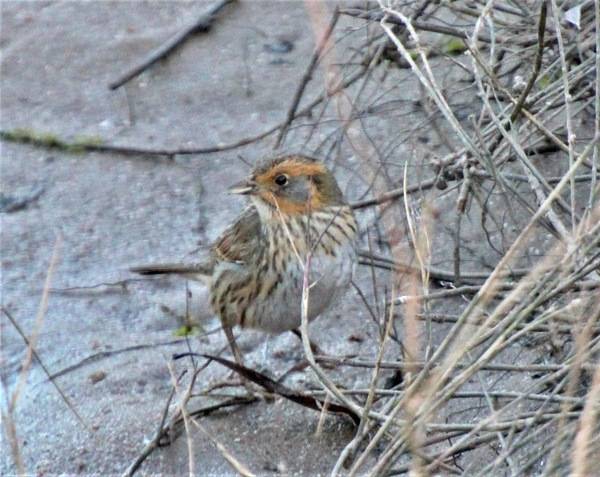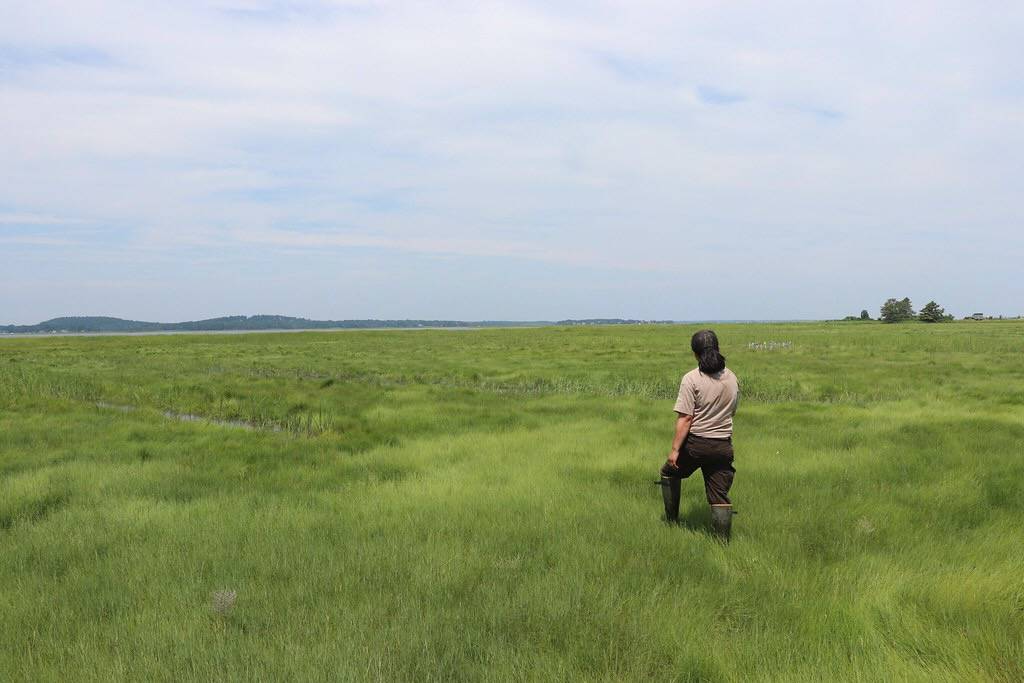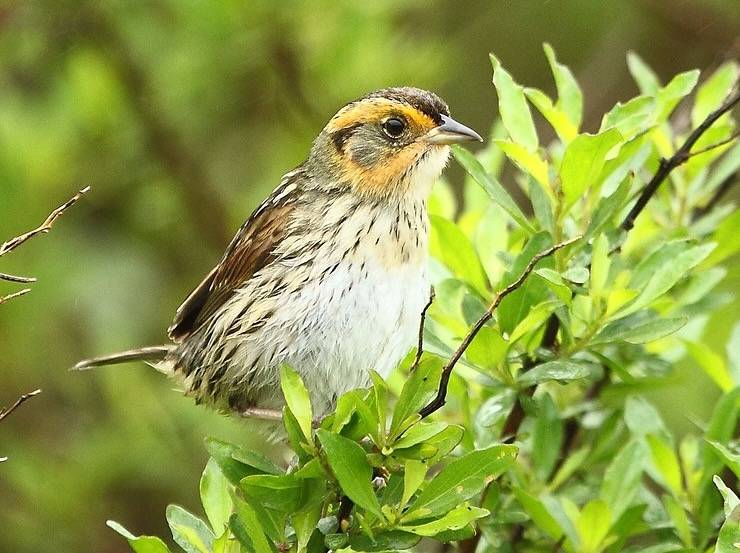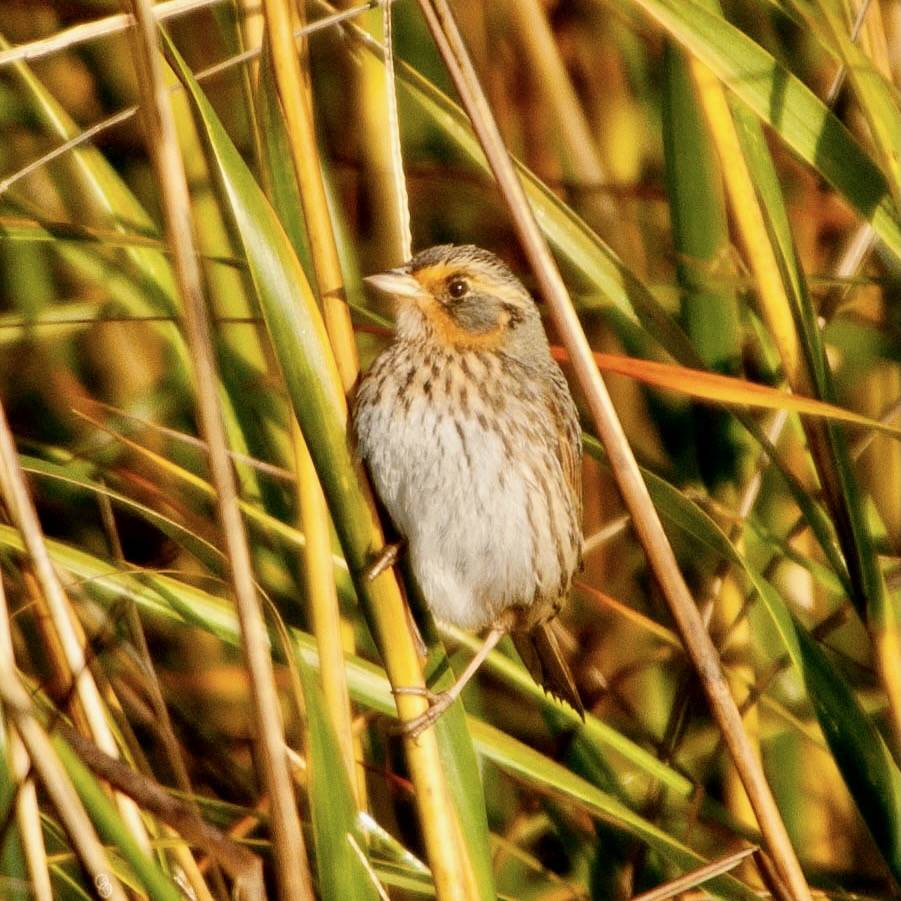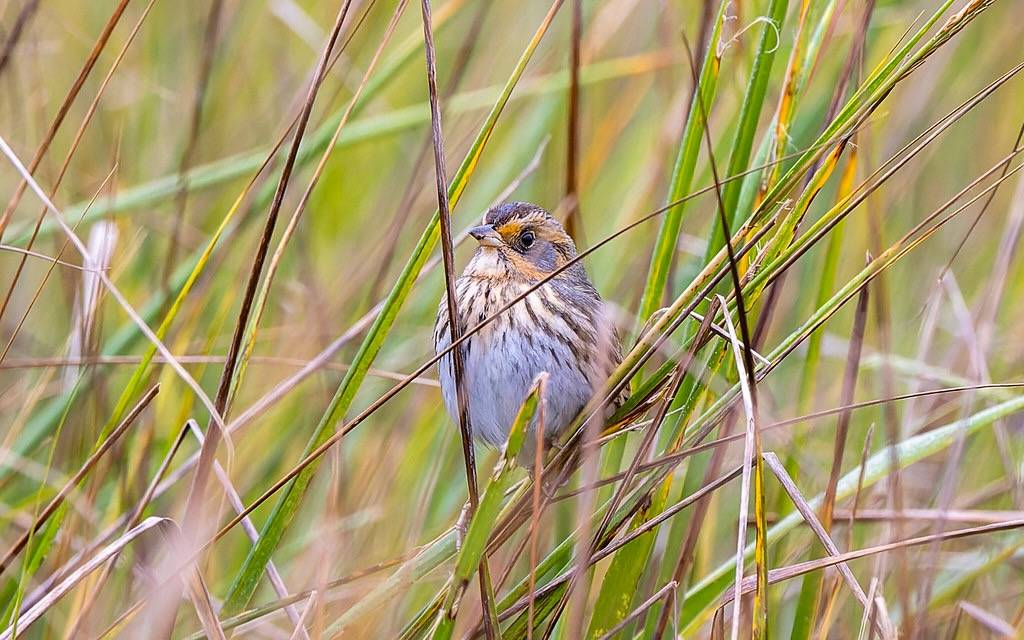Saltmarsh Sparrow
The Saltmarsh Sparrow is a rare visitor to Salter Grove. Based on available data for the park from 2002 to 2023, there has been only one sighting in mid-August, 2016. This species breeds exclusively in the coastal salt marshes that stretch from Maine to Virginia. The lone visitor was likely a migrant from Maine or Massachusetts on its way to winter in coastal marshes from North Carolina to Florida.
The Saltmarsh Sparrow can be confused with Nelson's Sparrow, a sister species which has been an equally rare visitor to Salter Grove. Both species favor dense marsh vegetation for all their activities, so it is a challenge to observe, much less distinguish between them in areas of co-occurrence.
Both sparrows have vibrant yellowish-orange plumage in the head area. However, the Saltmarsh Sparrow has buff underparts whereas the orange tinge in Nelson's Sparrow extends from the head down to meet a distinct white belly. The underparts of the Saltmarsh Sparrow are marked with thin and distinct dark streaks while the Nelson's Sparrow has thicker brown streaks that are blurry.
The Saltmarsh Sparrow was once lumped together with Nelson's Sparrow as the Sharp-tailed Sparrow. In 1995, the American Ornithologist' Union separated the two species in its Checklist of North American Birds on the basis of differences in song, morphology, and habitat. Subsequent analyses of mitochondrial DNA suggested that the two species were probably separated some 600,000 years ago by glaciers during the Pleistocene into an inland population and a coastal population.
Since the glacial separation, the Saltmarsh Sparrow became a specialist of tidal salt marsh whereas Nelson's Sparrow became a specialist of freshwater wetland. Comparative studies in Rhode Island and elsewhere showed a difference in their reproductive success in tidal habitat. Both species nest on or near the ground so risk losing eggs and nestlings to extreme high tides. In coastal marshes where both species breed, the Saltmarsh Sparrow enjoys higher reproductive success because the timing of its reproductive activities have adapted to regular tidal inundation of the nesting habitat.
However, its specialization may also lead to its demise. It was reported to be an abundant summer resident in all the salt marshes of Rhode Island in the late 1800's. Population data for the Saltmarsh Sparrow from the two breeding bird surveys in Rhode Island only showed a slight decline but its long term prospects are gloomy.
It suffered an alarming population decline of 75% in less than 15 years (1998 to 2012) across southern New England and is projected to continue at an annual rate of 9%. Researchers predict its extinction in Rhode Island by 2040 because of its total dependence on Atlantic coastal salt marshes for its livelihood. Human activities have greatly reduced suitable habitat and the warming climate and rising sea level have accelerated losses.
The U.S. Fish and Wildlife Service and various nongovernmental organizations in Massachusetts, New York, and Rhode Island have intensified studies in the past decade to identify measures that can preserve at least some suitable nesting habitat. Toward this end, the Saltmarsh Sparrow Research Initiative has been studying the breeding and post-breeding ecology of this extremely vulnerable species at Jacob Point in Warren RI.
For more information:
https://www.allaboutbirds.org/guide/Saltmarsh_Sparrow
https://www.audubon.org/field-guide/bird/saltmarsh-sparrow
https://en.wikipedia.org/wiki/Saltmarsh_sparrow
https://rinhs.org/wp-content/uploads/2021/09/ri_naturalist_special-issue_1_April-21.pdf
https://drive.google.com/file/d/1bnyKCSbvhiJ405EXIf8jXye-dx8fQsZh/view
https://www.fws.gov/story/saltmarsh-sparrows-need-help-surviving-rising-tides
http://narwhalslefttooth.blogspot.com/2017/10/rising-seas-are-drowning-salt-marshes.html
https://www.ncbi.nlm.nih.gov/pmc/articles/PMC6912898/#:~:text=Although
https://www.youtube.com/watch?v=VC1gSPVXXPw
Clarkson, C. E., Osenkowski, J. E., Steen, V. A., Duhaime, R. J., and Paton, W.C. (2023) The Second Atlas of Breeding Birds in Rhode Island. Rhode Island Department of Environmental Management Division of Fish and Wildlife. pp. 336-337.
Howe, Jr., R.H. and Sturtevant, E. (1899) The Birds of Rhode Island. pp. 15, 72. (as Sharp-tailed Sparrow)

